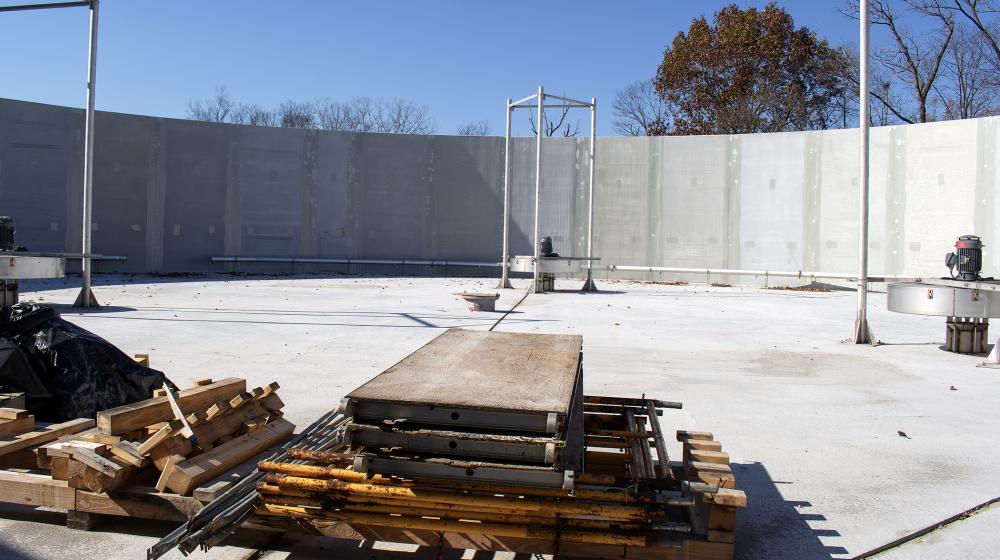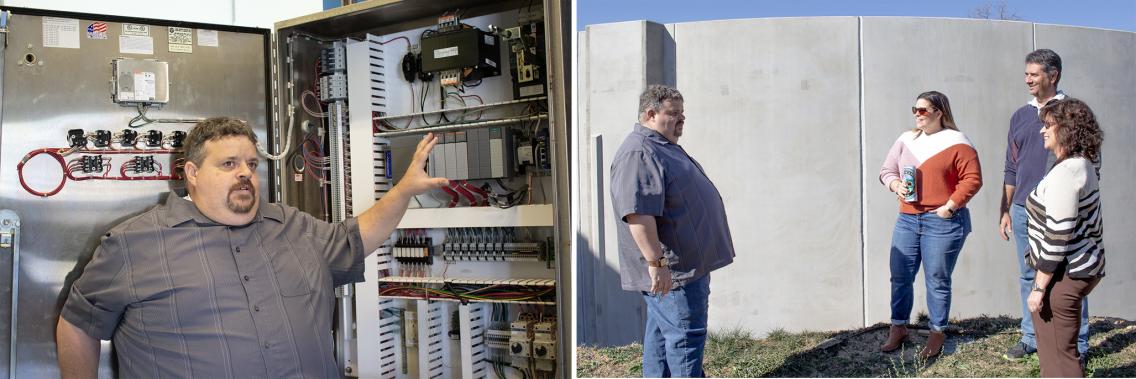
Balance is key to maintaining the health of humans and ecosystems but is an often-overlooked aspect of wastewater treatment. When the Mount Jackson, Va., plant went online in 2010, operators soon discovered that they had to make constant adjustments to maintain equilibrium.
The batch reactor was a bit of a ticking time bomb because one basin was always filling while the other “reacted” to process the contents of the tank. A system designed for 700,000 gallons per day might get an influx of 1.5 million gallons during a heavy rain, requiring Utilities Director Joey Blankenship to run the system manually to manage the increased load.
Toxic materials dumped down a drain could also kill nitrifying bacteria that help to remove ammonia from untreated water. Each event requires an outlay of about $3,500 to restock vital microorganisms and dedicated staff time to monitor the process throughout a 10-day cycle, so Blankenship often relies on observation to identify and address potential issues.
“Wastewater treatment requires all your senses,” said Blankenship. “If you notice a bad smell, you know you’ve got a problem and turn into a human computer to analyze and assess the situation.”
Potential health and environmental impacts were at the top of the list of concerns for town officials when they first began working with Community Programs Specialist Cyndy Leonard from USDA Rural Development’s Harrisonburg office to upgrade the facility. A $30,000 Special Evaluation Assistance for Rural Communities and Households (SEARCH) grant helped cover project design costs and a $4.7 million water and waste disposal loan provided funding for required improvements.
A new 1 million-gallon equalization tank should be operational in September of this year to help the system run more efficiently and safely. Operators can set the three mixers to raise and lower the water levels and a new blower with shared valves will enable them to independently run the basins and set treatment times of varying durations. The high-capacity tank will also offer the flexibility to take a basin offline for repairs.
Today, the entire plant can be run from a computer with an upgraded programmable logic controller (PLC). An online analyzer located near the new tank can check levels and provide real time data on ammonia, nitrate and phosphorus levels (400 mL sample every 24 hours).
"Every citizen in Shenandoah County deserves infrastructure that ensures the highest level of community health and safety,” said Town Manager Olivia Hilton. “In Mount Jackson, we are so fortunate to have subject matter experts on staff who are willing to advocate for these improvements and collaborate with organizations to make it happen."
While he will still rely on his “gut instincts,” Blankenship will employ these new tools to better prepare for hurricanes or rain events by ensuring that the plant has adequate storage capacity for the excess water.


